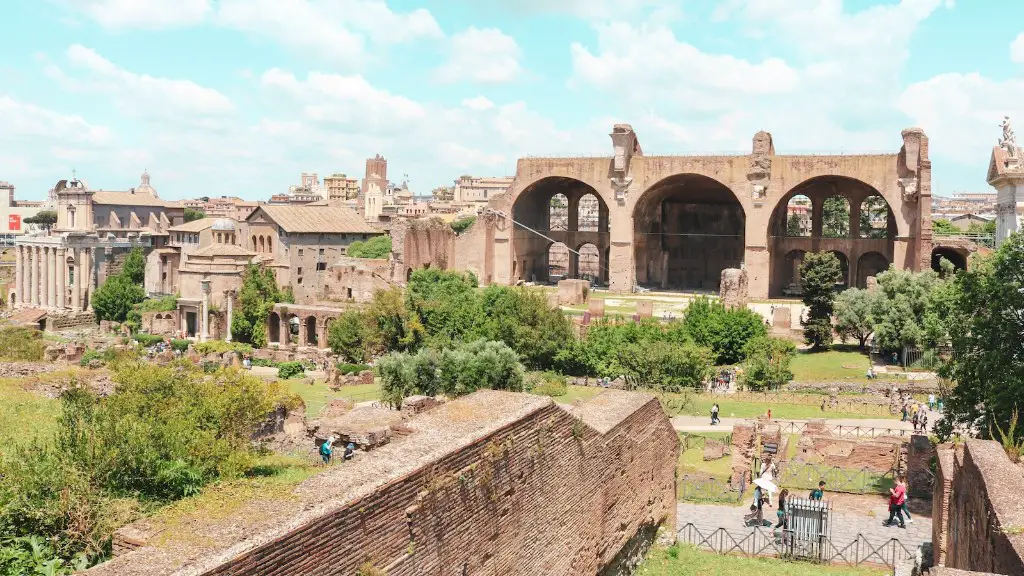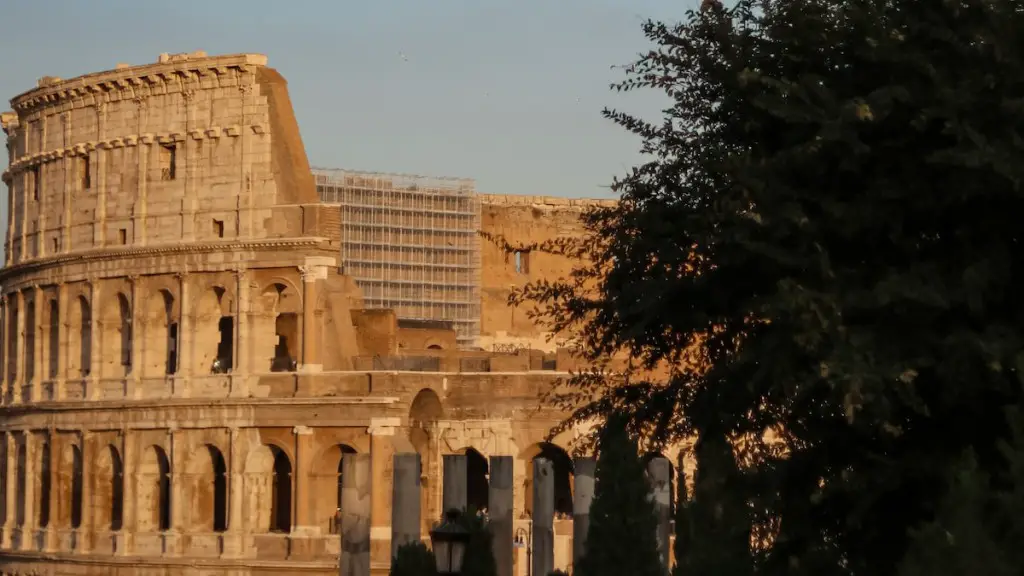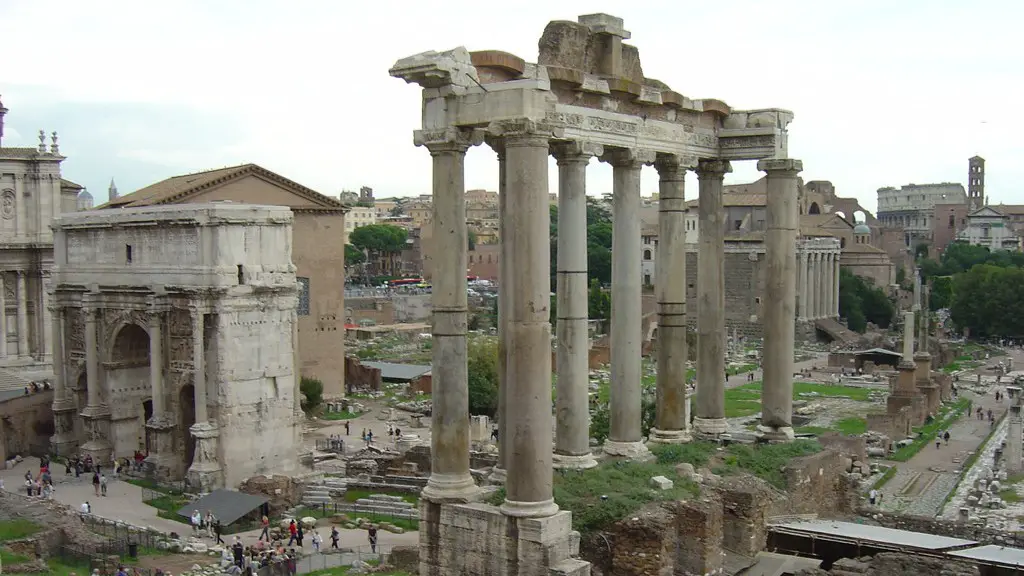The ancient Romans had a rich culture that was reflected in their celebrations and feasts. One of the most important aspects of Roman feasts was the food. The feasts were often elaborate and involved many courses of food. The ancient Romans also used feasts to celebrate religious holidays and other important events.
The ancient Romans celebrated with feasts to mark special occasions, to show their appreciation for good fortune, and to honor their gods and goddesses. Some of the more popular feasts were the Saturnalia, which honored the god Saturn; the Lupercalia, which honored the god Faunus; and the Floralia, which honored the goddess Flora.
What celebrations did the Romans celebrate?
Lupercalia was a festival celebrated in Ancient Rome on February 15th. The festival was in honor of Lupa, the she-wolf who nursed the infant twins Romulus and Remus. The festival would involve the sacrifice of a goat and a dog, after which the men would strip naked and run around the city with whips, striking any woman they came across.
Floralia was a festival celebrated in Ancient Rome from April 28th-May 3rd. The festival was in honor of the goddess Flora, and it involved the decoration of houses and public places with flowers. There would also be parades and public performances, and people would dress up in floral costumes.
Vulcanalia was a festival celebrated in Ancient Rome on August 23rd. The festival was in honor of the god Vulcan, and it involved the sacrifice of animals and the throwing of clay pots into bonfires.
Quinquatria was a festival celebrated in Ancient Rome from March 19th-23rd. The festival was in honor of the god Mercury, and it involved the holding of public speeches, plays, and musical performances.
Saturnalia was a festival celebrated in Ancient Rome from December 17th-23rd
A proper Roman dinner would usually consist of three courses – the hors d’oeuvres (gustatio), the main course (mensae primae), and the dessert (mensae secundae). The food and drink served was not only meant to fill the guests up, but also to add an element of spectacle to the meal. Roman dinners were often quite extravagant, with lots of different dishes and drinks on offer.
What were Roman feasts like
A Roman banquet would begin at around 5pm and include multiple courses. A typical menu might include cheese and salad as a starter, with a lot of meat or fish as the main course. Poultry, deer, rabbit or goat were popular, as were all kinds of fish and seafood.
Gods and goddesses were an important part of Roman life. The people of Rome built temples to their gods and observed rituals and festivals to honor and celebrate them. The gods and goddesses influenced every aspect of Roman life, from the food they ate to the clothes they wore.
What were Roman festivals called?
The feriae publicae, were holidays on which all business was suspended and everyone was expected to honor the gods. These festivals were often celebrated with parades, games, and feasts.
Rituals were an important part of ancient Greek life. They consisted of festivals, offerings (often of food or wine) and animal sacrifices. These rituals had to be carried out regularly and correctly in order to retain the favour of the gods towards the state, household or individual.
What did the Romans celebrate instead of Christmas?
Saturnalia was an ancient Roman holiday that honored Saturn, the god of seed-sowing, and celebrated the promise of a spring harvest. The holiday was a time of feasting, gift-giving, and revelry. It was also a time when the social order was reversed, and slaves were treated as equals. Saturnalia was a beloved holiday, and it was one of the most popular Roman festivals.
The cena was the main meal of the day for the ancient Romans, typically eaten around sunset. This meal was typically preceded by a light meal, called the ientaculum or breakfast, early in the morning. The evening meal, called supper or vesperna, was typically a smaller meal.
Were Romans laid down while eating
The horizontal position was believed to aid digestion — and it was the utmost expression of an elite standing. The Romans actually ate lying on their bellies so the body weight was evenly spread out and helped them relax.
The cena was the main meal of the day. richer citizens in time, freed from the rhythms of manual labor, ate a bigger cena from late afternoon, abandoning the final supper.
What was the ancient Roman food culture?
Grains, legumes, vegetables, eggs, and cheeses made up the base of the Roman diet, with fruit and honey for sweetness. Meat (mostly pork), and fish were used sparingly, but as the empire expanded beginning in the 3rd Century BC, Romans welcomed new flavours – be it pepper from India or lemons from Persia.
The Romans believed it was healthier to eat only one meal a day. This thinking impacted on the way people ate for a very long time.
What was the purpose of feasts
A feast is a special day or period of time when we celebrate something important. It can be an agricultural event, a religious holiday, or a social or cultural occasion. Feasts help to give meaning and cohesiveness to our lives and to the communities we belong to.
The ancient Romans had many festivals that they celebrated throughout the year. These festivals were usually to honor the gods or to commemorate an event. One of the most popular festivals was the Saturnalia, which was held in December to honor the god Saturn. This festival lasted for seven days and included feasting, gift giving, and merrymaking.
Why were Roman festivals important?
Festivals were a key part of ancient Roman culture and were held for a variety of reasons, including to propitiate or show gratitude toward the gods. Often, festivals were held in response to particular events, such as a victory in battle. The Roman calendar was full of festivals, and the people of Rome looked forward to them as a time to enjoy good food, wine, and company.
Thanksgiving’s ancient origins can be traced back to the Egyptians, Greeks, and Romans, who all feasted and paid tribute to their gods after the fall harvest. Thanksgiving also bears a resemblance to the ancient Jewish harvest festival of Sukkot.
What was the first Roman festival
Lupercalia was an ancient Roman festival that was conducted annually on February 15. It was overseen by a corporation of priests called Luperci. The festival was celebrated by sacrificing animals and then whipping people with the hides of the animals. This was done in order to purify the city and bring good luck.
According to Roman sources, by AD 165 the number of festival days, imperial birthdays, and other labor-optional days had reached 135. This would have been a significant burden on the Roman economy, as these were days on which businesses would have to close and workers would not be able to earn a living. The impact of this would have been felt particularly hard by the poor and lower-classes, who would have found it difficult to make ends meet. There is no doubt that this would have been a major contributing factor to the decline of the Roman Empire.
Conclusion
The ancient Romans celebrated many different things with feasts. For example, they would have a feast to mark the beginning of a new harvest, or to celebrate a military victory.
The ancient Romans celebrated a variety of different feasts throughout the year. Some of the more popular feasts were the Saturnalia, which was held in December in honor of the god Saturn, and the Lupercalia, which was held in February in honor of the god Lupercus. There were also feasts that were held to celebrate the harvest, as well as feasts that were held to mark special occasions such as the founding of a new city or the victory of a military campaign.





